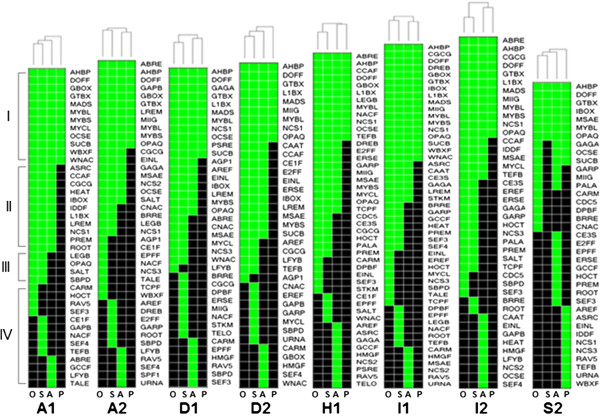Figure 4.
Binary hierarchical dendograms showing four major patterns of clustering and relatedness among orthologous bZIP transcription factors from rice, sorghum and Arabidopsis based on cis-regulatory information content. In all cases shown, rice (O) and sorghum (S) orthologs tend to cluster more closely with each other than with the Arabidopsis (A) orthologs and all other paralogs (P). Dendogram for COG A1 shows an example of the various patterns of TFBS co-occurrence that are also apparent in the other COGs. These patterns are defined by: TFBS classes that occurred/conserved in both orthologs and paralogs (I), TFBS classes present among all members of each tri-species COG but not in their paralogs, i.e., ortholog-specific (II), TFBS classes present in both monocot orthologs but not in the Arabidopsis ortholog, i.e., lineage-specific (III), and TFBS classes that are unique to each species, i.e., species-specific (IV). The occurrence of paralog-specific (P) TFBS classes was evident only in COG S2. Hierarchical clustering dendograms are presented only for representative COGs with a clear ortholog from all three species.

